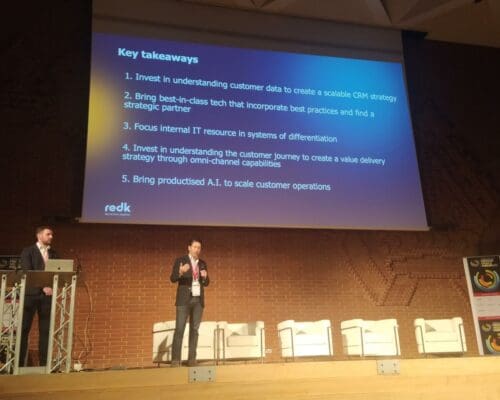Customer experience, or CX, is crucial for any business. It includes every interaction a customer has with your brand, from the first time they come across your company to all the ongoing support they might need. It shapes how customers see your brand based on everything from your ads and products to customer service. Salesforce describes it well, saying CX goes “far beyond just service — from first impressions to long-term engagement.”
This blog post explores the three pillars of CX transformation and how they can improve the customer experience. It expands on chapter one of our report, How to Meet Evolving Customer Expectations with Artificial Intelligence.
What is CX Transformation?
CX transformation means improving every part of how customers interact with your brand. It’s not just about improving customer service; it involves reimagining every touchpoint a customer has with your brand to create a cohesive, positive, and engaging experience. This transformation is crucial because today’s customers, whether B2C or B2B, expect more. According to Salesforce, a staggering 63% of business buyers believe their experiences fall short of potential, underscoring the urgent need for organisations to elevate their CX game.
How to Deliver an Excellent CX Transformation
Delivering an outstanding CX transformation involves a structured approach that encompasses understanding customer needs, designing and validating solutions, and refining how these solutions are delivered. Here are the three pillars of a CX transformation:
1. Determine What Customers Need
Start by really getting into your customers’ minds. Ask yourself: What are they looking for? What frustrates them? What makes them happy? This stage is all about deep listening—employing advanced analytics, direct feedback, and social listening tools to gather rich, actionable insights. When you truly understand your customers at this level, you’re equipped to tailor experiences that resonate perfectly every time. This thorough analysis forms a solid base of customer expectations, preferences, and challenges essential for all your CX design and delivery plans.
Going further means hearing what customers say, interpreting, and acting on that information. It’s about turning raw data and direct feedback into practical steps to refine your offerings. Maybe it’s time to tweak your products to match new trends or overhaul your customer service to smooth over common issues.
Each piece of feedback is a golden opportunity to improve and exceed customer expectations, crafting personalised experiences that build loyalty and satisfaction.
This proactive approach ensures that your brand meets and exceeds modern consumers’ demands, fostering deep connections and lasting relationships.
2. Design, Create, and Iterate to Validate Solutions
Once you understand your customer’s needs, the next step is to translate these insights into tangible products and services. This phase is all about brainstorming, prototyping, and testing. Think of it as a lab environment where every idea can prove itself.
Adopting a “CRM by Design” strategy is crucial in this stage. Here, cross-functional teams work closely together, including research, design, development, and operations experts. This collaborative approach guarantees that every aspect of the product or service is thoughtfully considered, with the customer’s needs front and centre from the initial concept to the final rollout.
Each step—brainstorming, prototyping, testing, and iterating—is driven by customer feedback, ensuring the end result perfectly aligns with your customer’s expectations.
It’s all about agility and responsiveness, continuously adapting your offerings to meet and exceed the evolving demands of your users.
3. Refine the Delivery of Experiences
The final step is ensuring that your beautifully designed products and services reach your customers in the best way possible. This could mean streamlining your website for a flawless online experience, speeding up delivery times, or training your staff to give gold-standard customer service. It’s about making every touchpoint a positive, memorable part of the customer journey.
The goal is to ensure customer interaction with your brand strengthens their overall perception and satisfaction.
To take this strategy even further, consider integrating advanced technologies to automate and optimise the customer journey. Tools such as CRM systems, chatbots, and personalised email marketing make customers feel recognised and valued during every interaction with your brand. These technologies boost efficiency and allow for a more customised approach, where services and communications are specifically tailored to meet each customer’s unique needs and preferences. By leveraging these technological advancements, you ensure that every encounter with your brand is not just satisfactory but delightfully surprising and deeply engaging, which helps solidify customer loyalty and trust.
CX Transformation is an Ongoing Process
CX transformation is a continuous journey that requires commitment across every level of an organisation. By focusing on these three critical areas, businesses can significantly enhance their customer experience. This effort does more than just meet expectations; it often surpasses the high standards that today’s customers hold, leading to increased loyalty and sustained business success. As companies continue along this path, they’ll discover that investing in CX is not merely advantageous but crucial for maintaining a competitive edge in today’s landscape.
Learn more about CX transformation in our report.









